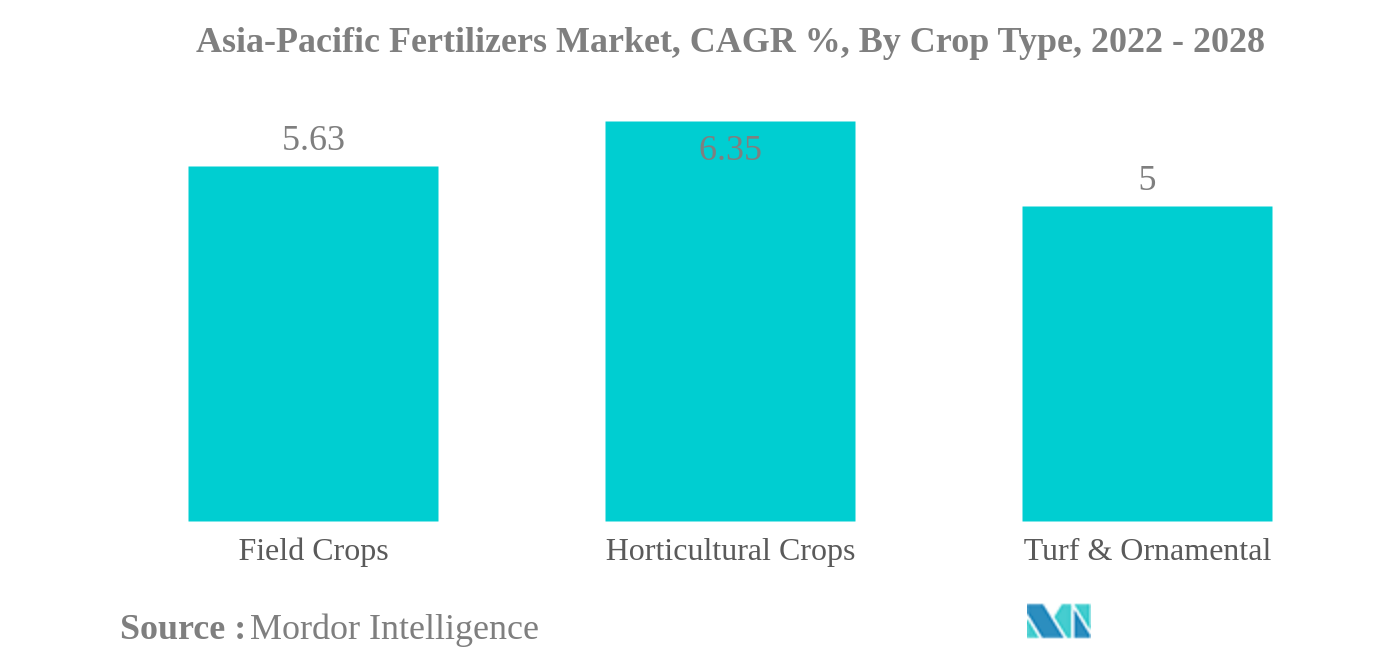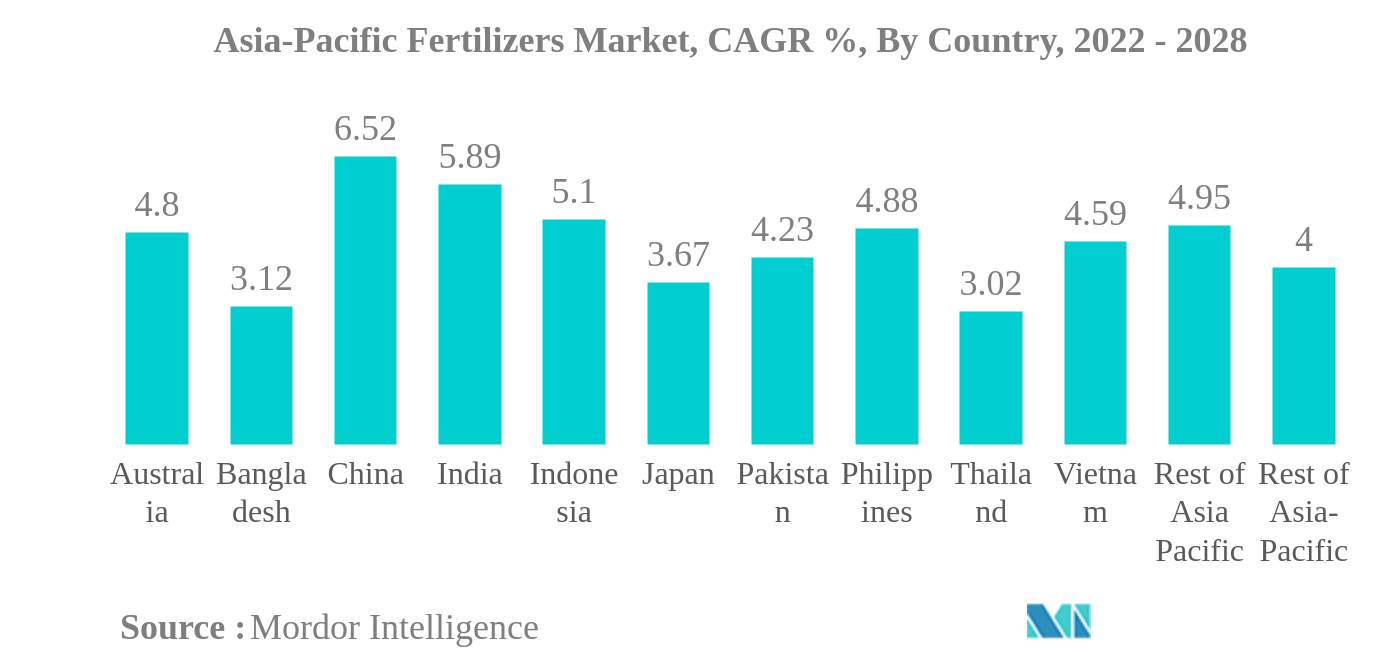Market Trends of asia-pacific fertilizers Industry
This section covers the major market trends shaping the APAC Fertilizers Market according to our research experts:
Field Crops is the largest segment by Crop Type.
- The Asia-Pacific fertilizer market is dominated by field crops, which make up around 84.3% of the overall fertilizer market. Field crop production accounts for more than 90.0% of the region's total agricultural land.
- In 2021, 7.07% of the region's overall fertilizer market value was accounted for by horticultural crops. Over 70.0% of the region's total horticultural crop production area is spread throughout China and India. The demand for horticultural crops has increased mainly after the pandemic.
- China and India are major agricultural producers in the Asia-Pacific region, mainly due to the large availability of arable land and the vast population leading to increasing food demand. With substantial government financial assistance to encourage mechanization and productivity in agriculture, this growth trend is expected to continue.
- Less than 2.0% of the fertilizer market in Asia-Pacific is estimated to be accounted for by turfs and ornamental plants. However, the primary beneficiaries of specialized fertilizers are turf and ornamental plants, as they require year-round maintenance and a continual supply of nutrients to preserve their green color.
- There is an increasing trend in the overall cultivation area in the region. In 2021, there was a 6.64 million ha increase in the cultivation area compared to 2020. A fifth of the region's people are employed in agriculture, and the industry occupies more than half of the region's land area, contributing significantly to the Asia-Pacific economy. Therefore, the fertilizer market in the region is anticipated increase during the forecast period.

China is the largest segment by Country.
- China is the largest producer and exporter of fertilizers in the region and the world and contributes 25% of global fertilizer production, as per the USDA. China's fertilizer market is estimated to be valued at USD 55.8 billion in 2022, with a volume consumption of 110 million tons.
- India is the world's second-largest consumer of fertilizers, with a consumption volume of 70 million metric tons in 2021. Despite being the third-largest producer of fertilizers globally, India is still import-dependent for 25% of urea, 55% of phosphorous, and 100% of potash annually.
- Japan is the third-largest fertilizer market in the Asia-Pacific region, accounting for 10% of the market, with a value of USD 10.2 billion in 2021. However, the country accounted for just 1% of the volume consumption, i.e., 2.03 million metric tons. This huge difference in the contribution of volume and value is attributed to the high price of fertilizers in the country compared to other countries in the region.
- Indonesia is the fourth-largest consumer in terms of market value and third-largest in terms of volume consumption, accounting for 5% of the value and 6% of volume in the region. The arable land in the country has been increasing over the years. In 2017, the total arable land in the country accounted for 52 million hectares, which increased to 57.0 million hectares in 2019, as per the FAO. This trend may further increase the usage of fertilizers in the country.
- Other Asia-Pacific countries like Vietnam, Australia, Bangladesh, Pakistan, Thailand, etc., together accounted for 18% of the total consumption volume in the country. The region is the fastest-growing in terms of fertilizer usage, and the growth trend is anticipated to continue in the future.

